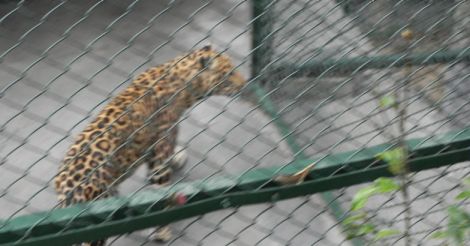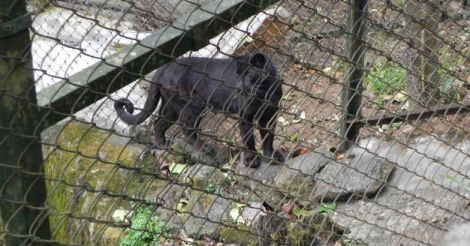The Indian leopard (South Asian leopard) is Asia’s most populous and elusive large predator. The leopard subspecies are found in cover almost all parts of the Indian subcontinent, including Pakistan in the west across India to Bangladesh in the east, and from Nepal and Bhutan in the north to the peninsular India in the south.
The huge range signifies the adaptability of this majestic predator cat to survive in various ecosystem habitats stretching from low range mountains and the foothills in the north to the coastal forests in the east, west and south. They are also reported from both dry and deciduous forests, evergreen forests, mountain cloud forests, arid and semi-arid forests, tropical and sub-tropical forests, covering widely different ecosystem habitats in which the Indian or South Asian leopard thrive as a top predator.
 Photo: Pallav Mukhopadhyay
Photo: Pallav MukhopadhyayIn several key habitats, the Indian leopard shares the space with the Indian tiger with overlapping ranges. India harbors the grandeur of representing wild habitats for five major global big cat species, namely, the Indian tiger, Indian lion, Indian leopard, snow leopard and clouded leopard. The population of the India leopard is by far the largest among all the five big cats.
Although occasional confrontations between these two top predators (tigers and leopards) are known in the wild, they have evolved and survived successfully and established themselves in all major ecosystems of the Indian subcontinent, excluding only alpine and sub-alpine habitats. In most cases of close confrontations, the leopards are know to avoid challenging the mightier tiger or lions (as in case of western Indian state of Gujarat) and have been successful in creating their niche habitats within major tiger or lion ranges.
The leopards are also known to face regular competitions from wild scavengers like jackals, foxes and hyenas. Hence, they often carry their prey to tree tops after hunting and has very successfully adapted to a semi-arboreal life style. It is important to note that leopards are one of the most successful master adapters of their local ecosystems and environment compared to all other big cats around the planet. They cater to their varying ecological needs without problems in the wild and are capable of covering significant distances in search of prey.
 Photo: Pallav Mukhopadhyay
Photo: Pallav MukhopadhyayHowever, serious anthropogenic footprints in a number of key leopard habitats are causing serious stress to the different leopard subpopulations across the Indian subcontinent. This has given rise to serious human-leopard conflicts across the Indian subcontinent in all the countries with natural ranges, namely, India, Pakistan, Bangladesh and Nepal, with the rare exception of Bhutan.
The nature of human-leopard conflicts have been turning from bad to worse resulting in death and life threatening injuries to both human and their animal neighbors. The predominant aspect of destruction of important leopard habitats has been due to habitat fragmentation and habitat degradation due to indiscriminate encroachments made by adjacent human settlements, aggressive crop production and expansion of tea and coffee plantations into forested areas, forcing the helpless animals to come in direct confrontation with humans.
The expansion of agriculture in the forested areas of the subcontinent has been rapidly shrinking the habitats of all major cat species, including the leopard. Due to heavy hunting pressure on herbivores both by poachers, as well as forest fringe residents, forest residents and remote rural communities, the prey base of leopards has been reduced significantly.
As a consequence, the leopards are often pushed to venture into the cities, towns, municipalities and adjacent rural areas in search of suitable or alternate prey species and food after covering huge distances. Often they are lost in their unplanned huge migration towards human settlements and get trapped within densely or highly congested human residential areas. Sometimes, female leopards move into the tea or coffee plantations or orchards or crop production areas to give birth to their cubs, trying to keep them safe away from other potential predators and male leopards in their forest habitats.
Leopards, thereby being pushed into the vulnerable human settlements are in perpetual danger of either attacking or being attacked by people for self defense. This is the tipping point of the human-leopard conflict across the nation and has resulted in tragic consequences where this majestic prey species has been mercilessly beaten to death by mobs armed with sticks and farm tools or several people were attacked, killed or seriously injured by cornered leopards.
If the local forest department is informed in due time and they are successful in arriving at the spots quickly, the trapped/cornered/injured animals would be successfully tranquilized and safely transported to wild destinations after necessary veterinarian examination and treatment.
However, when people take things into their hands, the animals have very little chances of survival. In several news reports, brutally killed leopards have been chopped into pieces (for wild meat) and sold in the market. While its skin and head are for trophies, and nails and paws are used in traditional medicine.
 Photo: Saikat Kumar Basu
Photo: Saikat Kumar BasuThe human-leopard conflict has reached epic proportions compared to man’s confrontation with all other big cats. This is a serious handicap for successful leopard conservation in the subcontinent. Furthermore, very little information on the population dynamics of the species is available right now. Very recently some eastern Indian states like West Bengal and Orissa have initiated formal leopard census. The species is actually data deficient in the true sense of the term. Hence, it is quite difficult to assess a correct picture of the damages to the wild populations of the leopards across the Indian subcontinent.
The human-leopard conflict story is almost the same across all the adjacent countries where the species has its habitat and this is not just a unique problem faced by India alone. Unless suitable conservation efforts are adopted and practiced with sincerity, the Indian or South Asian leopard may soon become a thing of the past across its vast range.
(The author is a Canada and India based freelance journalist specializing in global geo-political, strategic and foreign policy issues, science & technology and environment & conservation related themes.)

























